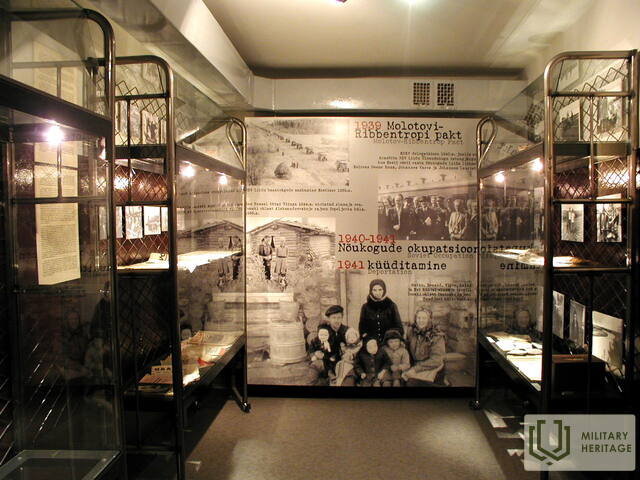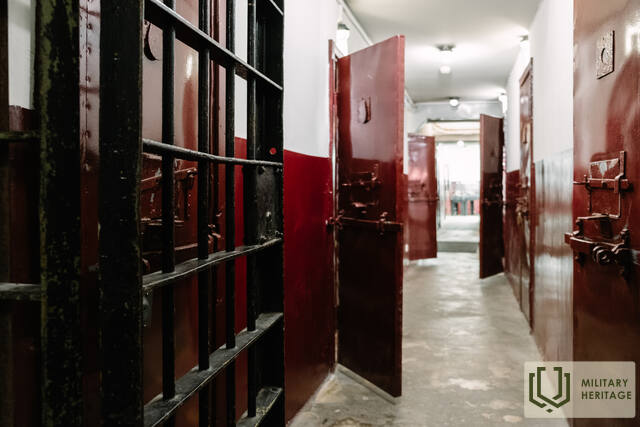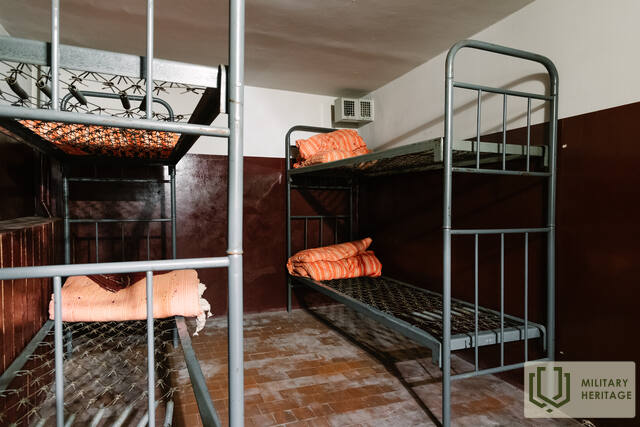KGB kamerų muziejus Muziejus

Šis muziejus yra įsikūręs Riia ir Pepleri gatvių kampe Tartu mieste.
Tai Tartu miesto muziejaus filialas. Muziejus įsikūręs liūdnai pagarsėjusiame pilkame pastate ant Riiamägi kalvos, kurį KGB naudojo kaip savo operacijų bazę Tartu XX a. 5-ajame ir 6-ajame dešimtmečiuose. Čia esantys rūsiai buvo naudojami kaip politinių kalinių tardymo izoliatorius. Dabar, po daugelio metų, muziejus atviras lankytojams. Kai kurios kameros (įskaitant tas, kurios buvo naudojamos vienutėje) ir dalis koridoriaus buvo atkurti iki pirminės išvaizdos. Paroda buvusiose kalėjimo kamerose suteikia apžvalgą apie Antrąjį pasaulinį karą, pokario antisovietinį pasipriešinimą Estijoje, komunistinio režimo įvykdytus nusikaltimus ir sąlygas sulaikymo centre. Muziejaus atidarymo idėja kilo buvusios pogrindinės studentų pasipriešinimo grupės Tartu mieste „Mėlyna-Juoda-Balta“ nariams, kurie, apsilankę savo buvusiose kamerose, sužinojo, kad rūsys buvo apleistas ir kad atkurti buvusią kalėjimo išvaizdą nebūtų labai sunku. Muziejus oficialiai atidarytas 2001 m. spalio 12 d.
Panaudoti šaltiniai ir literatūra:
Tartu miesto istorijos muziejai: https://linnamuuseum.tartu.ee/kgb-kongide-muuseum/muuseumi-tutvustus/
Kuusk, Pearu, Iš NKVD rūsio į muziejų. Apie Tartu „pilkąjį namą“ ir KGB kameras. – Tartu miesto muziejaus metraštis, XII, Tartu, 2006, p. 47–54.
Edukacinės programos
Klasės ekskursija
KGB kamerų muziejus siūlo ekskursijas įvairaus amžiaus lankytojams. Per valandą apžvelgsime pilką namą, kuriame vyko 1940–1950 m. NKVD/KGB veikė septintajame dešimtmetyje, o paroda skirta Antrajam pasauliniam karui, Estijos kovai už laisvę po karo, komunistinio režimo nusikaltimams ir gyvenimui tardymo izoliatoriuje.
Propaganda
„Propaganda“
Muziejaus pamoka suteikia mokiniams žinių apie propagandos apibrėžimą ir istoriją bei pateikia ryškiausius pavyzdžius. Pamokos pradžioje trumpa ekskursija supažindina su muziejaus ekspozicija. Tuomet su studentais seminaro stiliaus diskusijoje, kurioje, pasitelkdami propagandos pavyzdį, parodysime, kaip, nepaisant laiko tėkmės, kai kurie dalykai politikoje ir kare beveik nesikeičia – šiek tiek skiriasi tik priemonės ir tikslai. Pamokose kartu su mokiniais stebėsime ir analizuosime propagandinius plakatus, ieškosime dažniausiai pasitaikančių simbolių, nacionalinių stereotipų naudojimo ir kt.
Mokinys, dalyvavęs muziejaus pamokoje, bus susipažinęs su propagandos ir stereotipų sąvokomis, gebės apibūdinti jų kūrimo tikslus ir poveikį. Jis žino, kokia propaganda buvo vykdoma Estijoje. Gali užmegzti ryšius tarp praeities ir dabarties. Užsiėmimų metu lavinami diskusijos ir saviraiškos įgūdžiai.
Tartu Antrojo pasaulinio karo metais
Muziejaus pamokoje mokiniai supažindinami su mūsų gimtojo miesto likimu Antrojo pasaulinio karo metu. Pamokos pradžioje trumpa ekskursija supažindina su muziejaus ekspozicija. Tuomet, remdamasis gausia fotografine medžiaga, karo meto periodika ir amžininkų prisiminimais, mokinys įgyja žinių apie 1941–1944 m. įvykius. apie karo įvykius Tartu. Skaidrių demonstracijoje demonstruojamos mūšių ir karo nusikaltimų pasekmės, koks Tartu buvo karo metu ir kaip jis atrodo dabar. Mokinys, dalyvavęs muziejaus pamokoje, žino Tartu istoriją Antrojo pasaulinio karo metu. Žino, koks buvo gyvenimas karo metu ir kaip karas paveikė žmones, bei geba susieti Tartu tuo metu ir šiandien. Žino karo nusikaltimo sąvoką
Deportacija
Muziejaus pamoka suteikia mokiniams žinių apie masinius trėmimus, vykdytus Estijoje 1941 ir 1949 m. Pamokos pradžioje mokiniai gaus skaidrių demonstraciją, kurioje pristatomas trėmimų pobūdis, masinių nežmoniškų operacijų, vykusių Estijoje, organizacinės detalės, tikslinės grupės ir jų įgyvendinimo ypatumai. Programos metu studentai dalyvaus pristatydami savo supratimą ir reikšdami savo pozicijas. Po skaidrių demonstravimo vyks ekskursija, kurios metu bus pristatyta nuolatinė muziejaus ekspozicija. Mokinys, dalyvavęs muziejaus pamokoje, bus susipažinęs su tremties sąvoka, tikslu ir poveikiu. Žino, kodėl ir kaip Estijoje vyko deportacijos, pradedant sąrašų sudarymu ir baigiant tolesniu socialiniu bei ekonominiu poveikiu. Pamoka lavina diskusijos įgūdžius.
Ginkluotas pasipriešinimas – miško broliai Estijoje
Muziejaus pamokoje mokiniai supažindinami su įvairiais ginkluoto pasipriešinimo etapais Estijos istorijoje. Pagrindinis dėmesys skiriamas pokario ginkluotam pasipriešinimui, tačiau aptariamas ir vadinamasis 1941 m. Vasaros karo laikotarpis. Muziejaus pamokoje naudojami informatyvūs vaizdiniai elementai ir trumpi vaizdo įrašai, kuriuose aprašomos Miško brolių išlikimo ir pasipriešinimo strategijos.
Susijusi laiko juosta
Susijusios temos
Susijusi istorija
Prisiminimai apie KGB kameras Tartu
Ülo Raidma, studentų pasipriešinimo organizacijos „Mėlyna-Juoda-Balta“ narys, prisimena laiką, praleistą kamerose.


















